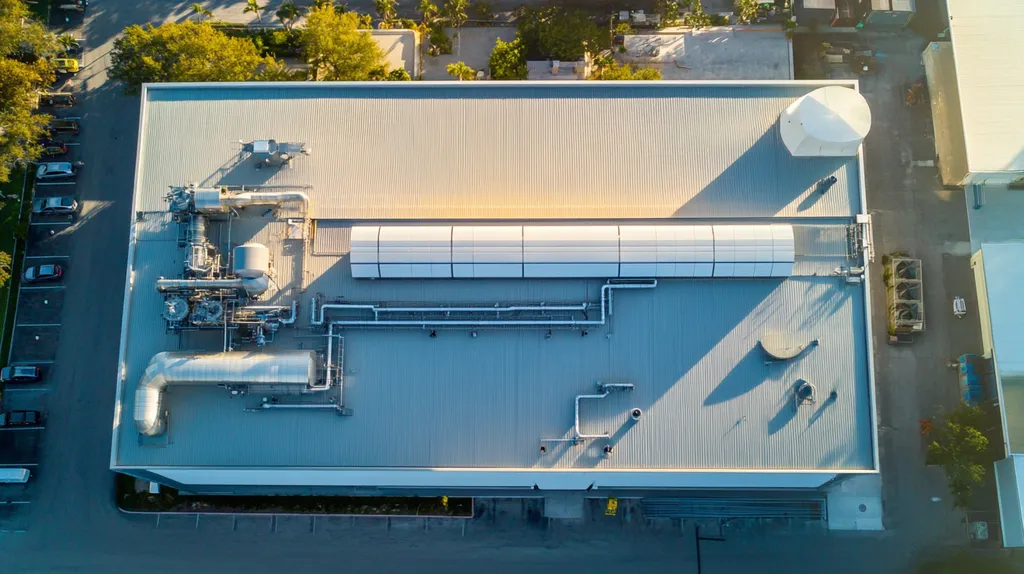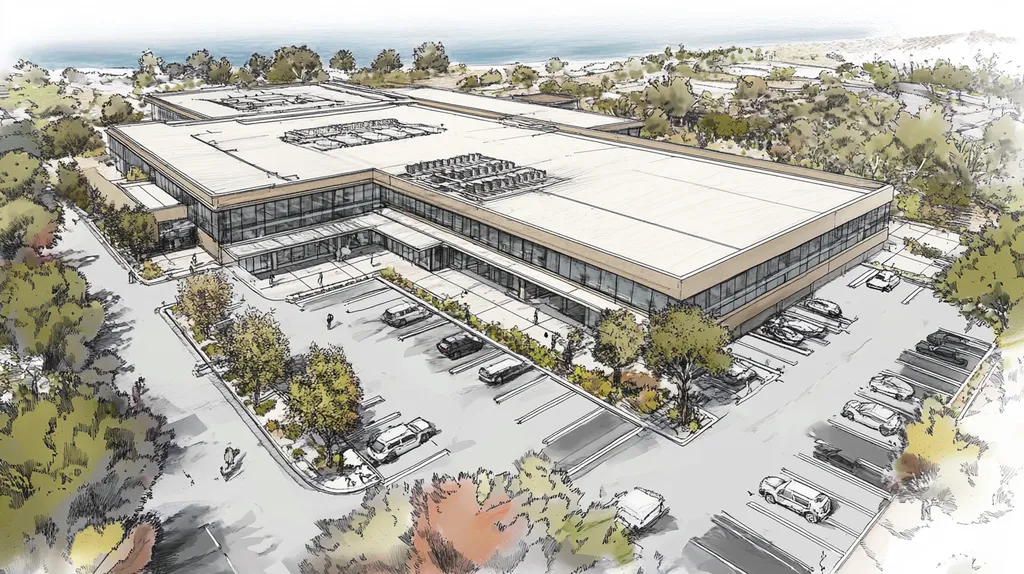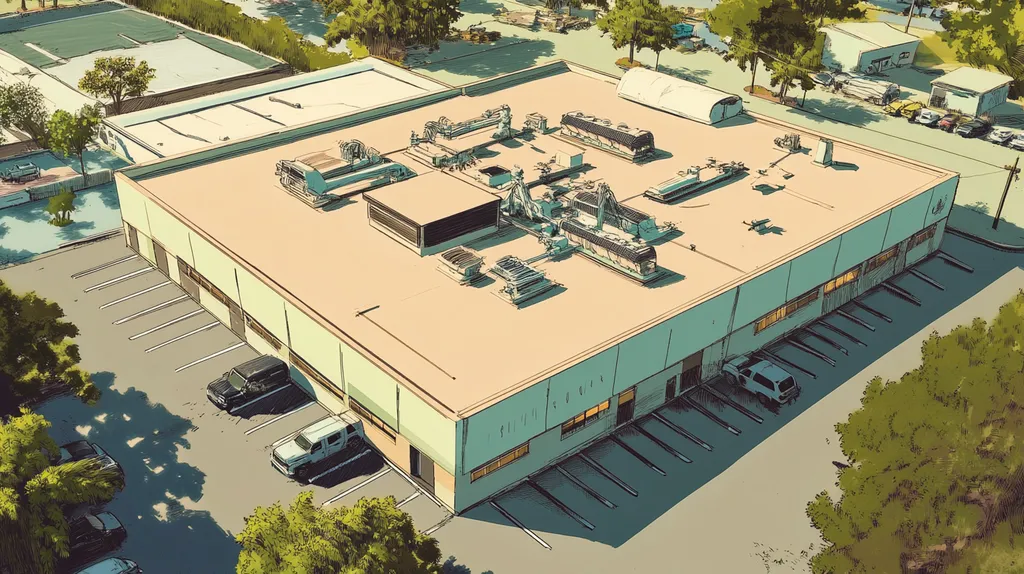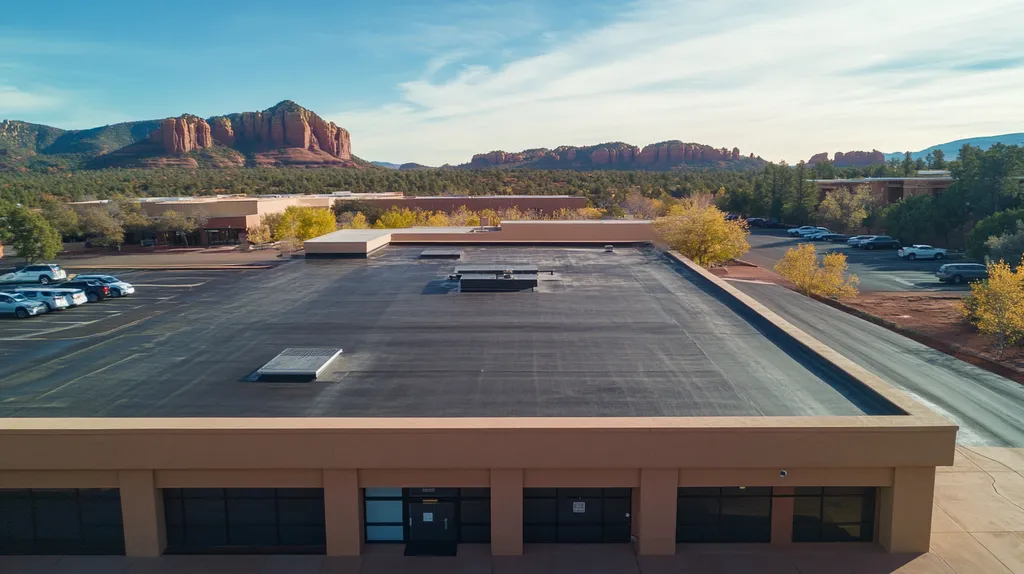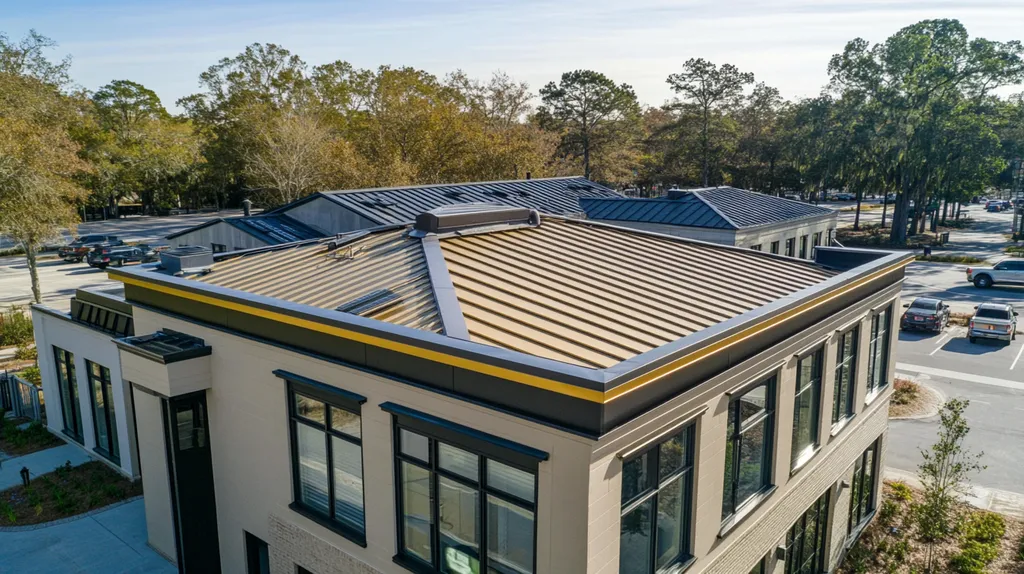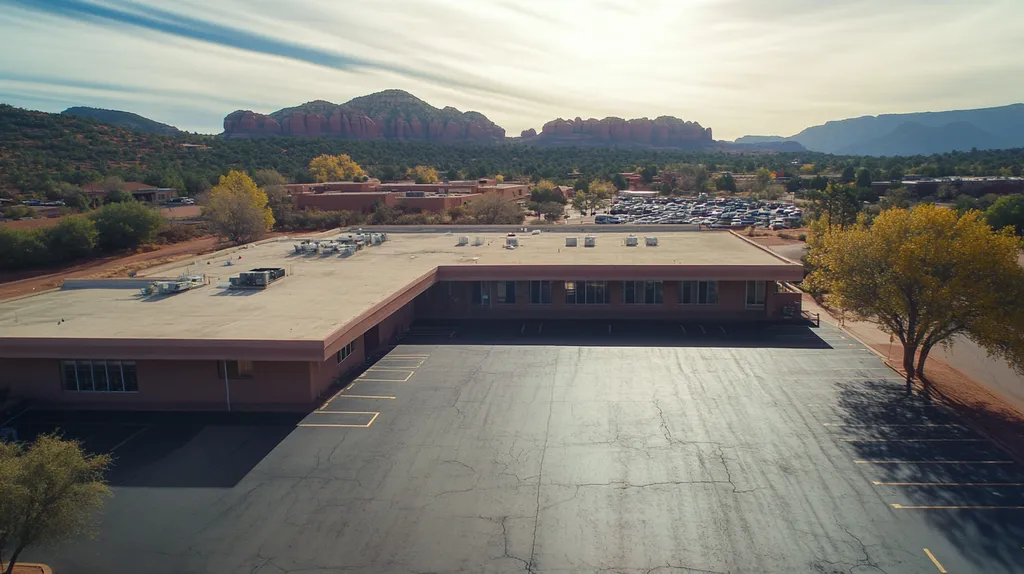Commercial property owners lose an estimated $3.7 billion annually due to inadequate roof insulation, with coating selection being a critical factor in preventing these losses.
As energy costs continue rising by 7-10% yearly, choosing the right insulation factors in roof coatings has become essential for maintaining building efficiency and controlling operational expenses.
This comprehensive guide examines key considerations in coating selection, from thermal resistance values to moisture protection capabilities, providing facility managers with actionable strategies to optimize their roofing investments.
SECTION 1: PERFORMANCE FACTORS
Choosing the right coatings for commercial roofs is vital for energy efficiency and long-term cost management. Facility managers need to understand how insulation factors play a crucial role in roof performance to avoid expensive errors. Inadequately insulated roofs can result in energy losses of up to 30%, driving up utility bills and diminishing tenant comfort. Key concepts such as R-Value, moisture resistance, and insulation material compatibility are essential for making smart decisions.
R-Value and Thermal Resistance
The R-Value is a critical metric that indicates how effectively insulation resists heat flow—a higher R-Value signifies better insulation performance. Facility managers often underestimate the importance of this measure when selecting roof coatings, potentially leading to considerable energy expenditures.
For instance, a roof with an R-Value of 20 could lose twice as much heat compared to one with an R-Value of 30, resulting in thousands of dollars in extra energy costs over the years.
When assessing coatings, it is crucial to select options that enhance R-Value while keeping the roofing system lightweight. This balance is essential for maintaining structural integrity while boosting thermal efficiency.
Key Action Items
Moisture Resistance and Durability
Moisture resistance is another fundamental factor affecting roof performance. Effective coatings should repel water, reducing the risk of leaks and mold development. Strong, durable coatings act as defenses against moisture, prolonging roof lifespan.
Opting for coatings with superior moisture barriers can lead to cost savings on repairs. Facilities that face frequent leaks often experience operational downtime that can negatively impact overall productivity and profits.
Moreover, moisture-resistant coatings contribute to a healthier building environment by inhibiting mold growth, which is vital for maintaining indoor air quality. Investing wisely in coating selection can prevent thousands in future repair and compliance costs.
Key Action Items
Insulation Material Compatibility
The compatibility of insulation materials with roof coatings plays a significant role in maximizing overall system performance. Not all coatings work well with every type of insulation, and using the wrong combinations can diminish efficiency and lead to early failures.
For instance, certain coatings may adversely react with specific foam insulation types, risking their integrity and thermal effectiveness. Conducting compatibility evaluations is critical to avoiding unexpected issues.
Facility managers should engage with manufacturers about recommended material pairings to ensure peak performance. Aligning various components based on technical specifications enhances durability and efficiency.
Key Action Items
SECTION 2: FINANCIAL CONSIDERATIONS
In today’s competitive landscape, facility managers face the critical task of balancing financial efficiency with roofing material selection. The insulation within roofing coatings significantly influences energy consumption and operational budgets. Miscalculating insulation requirements can lead to soaring energy costs, with studies indicating that poorly insulated buildings can waste over 30% in heating and cooling expenses annually. Striking the right balance between initial installation costs and long-term savings is essential for making sound financial decisions.
Initial Installation Costs
The initial costs associated with roofing coatings can vary greatly based on insulation quality. While opting for cheaper options may cut down initial expenses, these coatings often lack the durability and energy efficiency needed for long-term value. For example, a high-insulation single-ply membrane may present a higher upfront investment but can lead to substantial savings on future energy bills.
Additionally, selecting high-quality insulation can curtail future costs, as better insulation reduces heating and cooling demands. Thus, although upfront costs might seem high, investing in superior insulation typically results in cost savings over time.
Furthermore, choosing coatings with built-in insulation features can streamline the installation process, reducing labor costs and minimizing disruptions. Smart decisions made during the initial stages can have a lasting impact on a facility’s financial stability.
Key Action Items
Long-Term Energy Savings
Energy savings continue to affect a facility’s operating costs long after initial installation. Effective insulation plays a vital role in stabilizing indoor temperatures, which can lead to reduced energy usage. The U.S. Department of Energy reports that improved insulation may lower energy bills by as much as 50% in some facilities.
Moreover, quality insulation contributes to the longevity of the roofing system by decreasing wear on HVAC units. This, in turn, can lower maintenance expenditures. Property managers must consider these long-term savings as part of their overall financial planning.
When evaluating different roofing systems, factoring energy savings is crucial. Conducting a thorough energy audit can uncover potential cost reductions that may outweigh the differences in initial investments, aligning financial objectives with energy efficiency goals.
Key Action Items
Maintenance and Replacement Costs
The quality of insulation in roofing coatings directly affects maintenance costs. Roofs with poor insulation are more prone to issues like leaks, condensation, and mold, which can escalate repair expenses. On the flip side, roofs with effective insulation experience less deterioration, resulting in lower maintenance needs and costs.
Furthermore, quality insulation can extend the lifespan of roofing materials, reducing the frequency of replacements. A well-insulated commercial roof can last up to 30 years, whereas less effective options may only last around 15 years.
Facility managers should allocate budgets not only for initial installation but also for the long-term maintenance and potential replacement expenses. A strategic investment in quality insulation pays off by minimizing future issues and prolonging the life of roofing systems.
Key Action Items
SECTION 3: COMPLIANCE REQUIREMENTS
Ensuring compliance with local building codes and industry regulations is not just a box to check; it’s a critical component of any commercial roofing project. Ignoring these standards can lead to costly fines and potentially unsafe structures. The International Code Council (ICC) provides guidelines that set minimum safety and performance benchmarks for roofing materials, including essential insulation values. Facility managers must grasp these requirements to safeguard the longevity and efficiency of their roofs.
Local Building Codes and Standards
Local building codes outline the baseline standards for construction and renovations, including roofing systems. These regulations can vary significantly from one jurisdiction to another, dictating specifics such as materials, installation techniques, and performance metrics. For example, some areas specify minimum insulation R-values to ensure adequate thermal efficiency.
It is essential for facility managers to familiarize themselves with the codes applicable in their areas. Non-compliance can lead to safety risks, higher energy bills, and serious structural problems. By understanding local codes, managers can make informed decisions about roofing materials and coatings that meet or exceed those standards.
Additionally, certain local codes may require certifications for roofing products, including fire resistance and wind uplift tests. Choosing compliant materials not only enhances safety but also minimizes long-term maintenance costs.
Key Action Items
Energy Efficiency Regulations
Energy efficiency regulations significantly influence coating selection for commercial roofs. Many jurisdictions have implemented stricter energy performance standards, affecting how roofs should be constructed and maintained. Compliance with guidelines like the Energy Policy Act or ASHRAE standards encourages improved energy usage within buildings.
Facility managers need to assess insulation materials and corresponding coatings to meet energy performance metrics. For example, the use of reflective coatings can enhance energy efficiency by minimizing heat absorption, thereby reducing cooling costs, especially in urban areas.
Moreover, some energy efficiency initiatives provide financial incentives for adopting compliant roofing technologies, helping offset initial costs and promoting long-term savings. Understanding these incentives is crucial for making informed choices that are both compliant and economically beneficial.
Key Action Items
Environmental and Health Standards
Environmental and health standards are crucial in selecting roofing materials, specifically regarding coatings and insulation. Many coatings may contain harmful volatile organic compounds (VOCs), which can negatively impact indoor air quality. Compliance with environmental regulations is essential to mitigate these risks.
Facility managers must stay informed about environmental standards set by agencies like the Environmental Protection Agency (EPA). Choosing low-VOC or VOC-compliant options helps create a healthier work environment and minimizes regulatory challenges.
Additionally, roofs made from sustainable materials can qualify for certifications like LEED (Leadership in Energy and Environmental Design), enhancing the building’s sustainability profile. Such certifications can boost marketability and potentially raise property values.
Key Action Items
SECTION 4: RISK MANAGEMENT
Effective risk management is essential for ensuring the longevity and performance of commercial roofs. Every decision made regarding coating selection can drastically influence how a facility withstands weather events, maintains structural integrity, and prevents water damage. For instance, estimates indicate that choosing the wrong roof coatings can diminish a roof’s lifespan by up to 30%. This section delves into the critical topics of weather and climate risks, structural load capacity, and strategies to protect against water damage.
Weather and Climate Risks
The unpredictability of climate change has intensified severe weather patterns, raising the stakes for roofing systems. Hail, heavy rainfall, and extreme temperatures can wreak havoc on an insufficient roofing setup. For example, reflective coatings are designed to combat excessive heat, making them invaluable in regions with soaring temperatures.
Choosing coatings with optimal insulation factors is crucial for managing these risks. Improved insulation helps maintain consistent interior temperatures, reduces energy consumption, and boosts the roof’s overall effectiveness. Facilities should rely on local climate data to select coatings that provide effective protection.
Additionally, regular inspections after storms are crucial for assessing roof conditions. Damaged coatings can lead to moisture infiltration, threatening the roofing structure and racking up repair costs. Understanding potential weather-related risks empowers facility managers to make proactive choices.
Key Action Items
Structural Integrity and Load Capacity
The structural integrity of a commercial roof is directly influenced by the weight of coatings and insulation materials. Heavy coatings can jeopardize the roof’s load capacity and lead to significant structural problems. Facility managers must carefully evaluate the combined weight of insulation and coatings during their selections.
Utilizing lightweight insulation options while maintaining high thermal efficiency enhances structural safety. For instance, polyisocyanurate insulation not only provides excellent thermal resistance but is also lightweight, helping to preserve the roof’s overall capacity.
Routine assessments of the roofing system’s weight allowances are necessary for compliance with building regulations. Adhering to these guidelines minimizes the risk of structural failure, extends the roof’s lifespan, and mitigates unexpected costs down the line.
Key Action Items
Potential for Water Damage and Leaks
Water damage poses a serious threat to the integrity of commercial roofs. Inadequate insulation can create temperature differentials that promote condensation, heightening the risk of leaks. Choosing the right coating can serve as a protective barrier, preventing moisture from penetrating and prolonging the roof’s life.
Facility managers should analyze thermal performance ratings when selecting coating systems. High insulation factors paired with appropriate coatings significantly reduce the probability of leaks, safeguarding the internal structure of the building. The cost savings achieved from preventing water damage far outweigh the initial investment in quality materials.
Furthermore, routine maintenance checks help detect early signs of water damage. Catching problems promptly can dramatically lower repair costs and protect valuable roofing investments from leaks and structural issues.
Key Action Items
SECTION 5: OPERATIONAL PROCEDURES
Implementing effective operational procedures is essential to maximize the insulation benefits of roofing coatings. Neglect or poor installation can lead to significant energy losses, with some buildings losing up to 30% of their efficiency. Facility managers must set clear standards for installation, maintenance, and repair to safeguard their investments and improve building performance.
Installation Methods and Techniques
Selecting the appropriate installation method is crucial for optimizing insulation factors. Engaging professional roofing contractors with specialized experience in coating applications can greatly enhance performance. For example, spray-applied coatings offer seamless insulation, which can minimize thermal bridging and condensation risks.
Surface preparation plays a critical role as well. Ensuring that surfaces are clean and dry is vital for effective adhesion and improved insulation properties. Facility managers should confirm that installers adhere strictly to manufacturer specifications to achieve optimal insulation performance.
Utilizing layered application techniques can also improve insulation. Applying multiple coats increases the coating thickness, enhancing the building’s energy efficiency. This should be a topic of discussion during contract negotiations, so roofing systems are tailored for peak performance.
Moreover, using reflective coatings can significantly lower heat absorption, which is particularly beneficial in sunny regions where cooling costs can rise rapidly.
Key Action Items
Regular Inspection and Maintenance
Routine inspections are vital to preserving the integrity of roof coatings and their insulation capabilities. Facility managers should plan for inspections at least twice a year, particularly after severe weather events. These checks can quickly identify issues like cracks or blistering that could undermine insulation and energy efficiency.
Preventive maintenance tasks are equally crucial. Regularly cleaning gutters and removing debris can prevent water damage, which may compromise insulation. Addressing minor repairs promptly can help avoid more costly replacements and extend the lifespan of the roofing system.
Maintaining a log of all inspection findings and maintenance interventions is essential. This record allows facility managers to monitor roof performance closely and proactively tackle insulation-related issues. Educating team members on how to spot early signs of wear can also facilitate quicker interventions.
Key Action Items
Repair and Replacement Protocols
Establishing efficient protocols for repair and replacement is crucial for maintaining optimal insulation. Quick repairs can significantly mitigate small issues and prevent more serious insulation loss. Facility managers should prioritize timely interventions to sustain energy efficiency.
When materials become outdated or damaged, it may be necessary to consider replacements. Opting for high-performance, energy-efficient coatings can sustain or enhance insulation factors. Consulting with roofing specialists ensures that replacement materials align with the unique energy needs of the building.
Additionally, during a replacement, managers should explore advanced insulation materials that offer higher values. Many modern coatings provide better insulation than older products. A thorough evaluation of the roof structure before application is essential to support improved insulation and achieve long-lasting energy savings.
Key Action Items
SECTION 5: OPERATIONAL PROCEDURES
Implementing effective operational procedures is critical for maximizing the insulation benefits of roofing coatings. Neglecting these steps can lead to significant energy losses—some buildings may lose up to 30% of their energy efficiency. Facility managers must establish clear guidelines for installation, maintenance, and repair to protect their investments and enhance overall building performance.
Installation Methods and Techniques
Choosing the right installation method is essential for optimizing insulation factors. Engaging professional roofing contractors with specific expertise in coating applications can greatly enhance performance. For example, spray-applied coatings can create seamless insulation, reducing thermal bridging and preventing moisture build-up.
Surface preparation is equally crucial; surfaces need to be clean and dry for effective adhesion, which boosts insulation properties. Facility managers should ensure installers strictly follow manufacturer specifications to achieve the optimal insulation factor.
Layered application techniques can also enhance insulation. Applying multiple coats increases the thickness of the coating and improves the building’s energy efficiency. Discussing these options during contract negotiations helps ensure roofing systems are designed for peak performance.
Finally, using reflective coatings is vital, especially in sunny regions, as it can significantly lower heat absorption and thus reduce cooling costs.
Key Action Items
Regular Inspection and Maintenance
Routine inspections are vital to preserving the integrity of roof coatings and their insulation capabilities. Facility managers should plan for inspections at least twice a year, especially after severe weather events. These checks can quickly identify issues such as cracks or blistering that could undermine insulation and energy efficiency.
Preventive maintenance tasks are equally important. Regularly cleaning gutters and removing debris can prevent water damage, which may compromise insulation. Addressing minor repairs promptly can help avoid costly replacements and extend the lifespan of the roofing system.
Maintaining a log of all inspection findings and maintenance interventions is essential. This record allows facility managers to monitor roof performance closely and proactively tackle insulation-related issues. Educating team members to spot early signs of wear can facilitate quicker interventions.
Key Action Items
Repair and Replacement Protocols
Establishing efficient protocols for repair and replacement is essential for maintaining optimal insulation. Quick repairs can significantly mitigate small issues and prevent more serious insulation loss. Facility managers should prioritize timely interventions to sustain energy efficiency.
When materials become outdated or damaged, it may be necessary to consider replacements. Opting for high-performance, energy-efficient coatings can sustain or enhance insulation factors. Consulting with roofing specialists ensures that replacement materials align with the building’s specific energy needs.
In addition, managers should explore advanced insulation materials during replacements, as modern coatings often offer higher insulation values. A thorough evaluation of the roof structure before applying new coatings will support enhanced insulation and yield long-term energy savings.
Key Action Items
The Bottom Line
With commercial roofing costs rising 15-20% annually and energy expenses following a similar trajectory, selecting the right insulation factors in coating choices has never been more critical for facility managers.
Studies show that optimized coating selections can reduce energy costs by up to 40% while extending roof lifespans by 10-15 years.
Success requires a systematic approach incorporating performance metrics, financial considerations, compliance requirements, risk management strategies, and operational procedures.
Facility managers who implement comprehensive coating evaluation protocols consistently achieve 25-30% better ROI on their roofing investments.
The future of commercial roofing lies in data-driven decision-making that balances immediate costs against long-term performance benefits.
FREQUENTLY ASKED QUESTIONS
Q. What should I know about R-Value for commercial roofs?
A. R-Value measures insulation effectiveness, with higher values indicating better performance. Poor R-Value choices can result in increased energy costs due to heat loss, making it vital to assess insulation options carefully. Evaluating R-Values among products ensures you choose the most energy-efficient paths.
Q. How do insulation choices affect my industrial roof’s budget?
A. Selecting insulation materials influences not just initial costs but energy bills over time. Investing in high-quality insulation may raise upfront expenses but lead to lowered energy consumption. Long-term savings on operational costs often justify the initial investment, ensuring financial efficiency in the long run.
Q. What local codes should I comply with for commercial roofs?
A. Local building codes vary widely, specifying requirements like insulation R-values and material types. Familiarizing yourself with these regulations ensures that you avoid fines and safety hazards. Compliance enhances safety and longevity, making it crucial for managers to account for local standards when planning roofing projects.
Q. How do I assess weather risks for my commercial roof?
A. Understanding local climate data helps you select coatings that withstand specific weather threats, like heat or heavy rainfall. Regular inspections after adverse conditions are also essential to check for damage. Proactive assessments maximize your roof’s effectiveness against unpredictable weather events.
Q. Why is timely maintenance essential for industrial roof longevity?
A. Regular maintenance prevents small issues from escalating into major problems. Poorly maintained roofs face risks like leaks and insulation loss, leading to significant repair costs. Establishing a routine inspection schedule helps identify concerns early, contributing to the roof’s overall durability and efficiency.
Q. How do I choose the right installation method for my commercial roof?
A. Selecting experienced roofing contractors ensures proper adhesion and insulation properties. Discussing installation techniques, like layered applications, can enhance thermal performance. Correct installation maximizes coating effectiveness, making it a vital consideration for optimal long-term roof performance.
Q. What are the risks of inadequate waterproofing on roofs?
A. Insufficient waterproofing can lead to leaks, encouraging mold growth and structural damage. Proper coatings create barriers against moisture, preserving integrity and minimizing repair costs. It’s crucial to select moisture-resistant materials to enhance protection and prevent damage.

